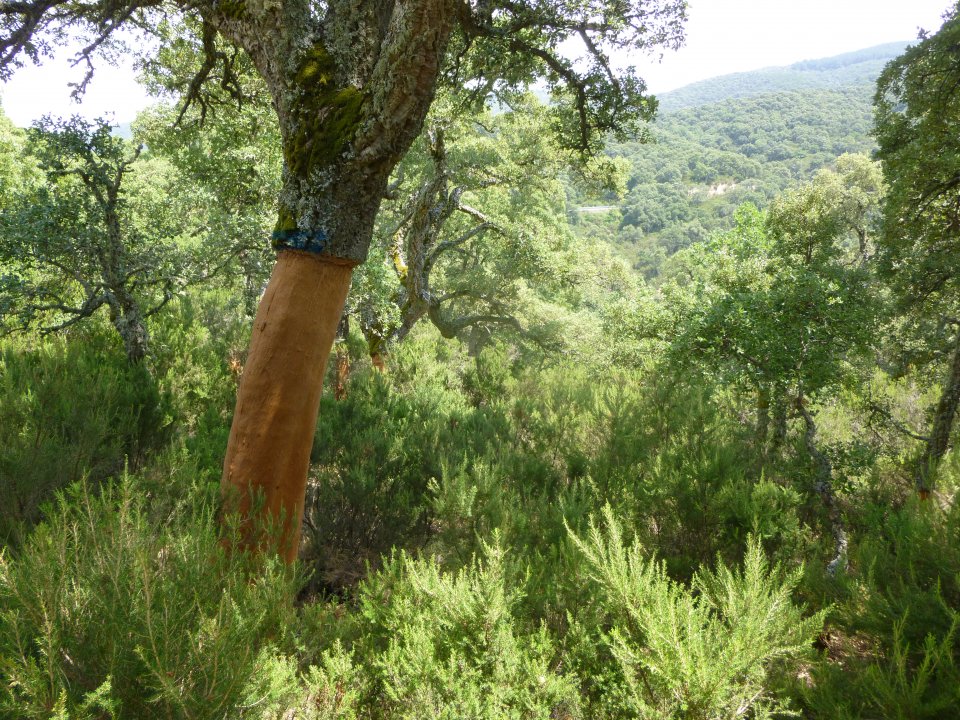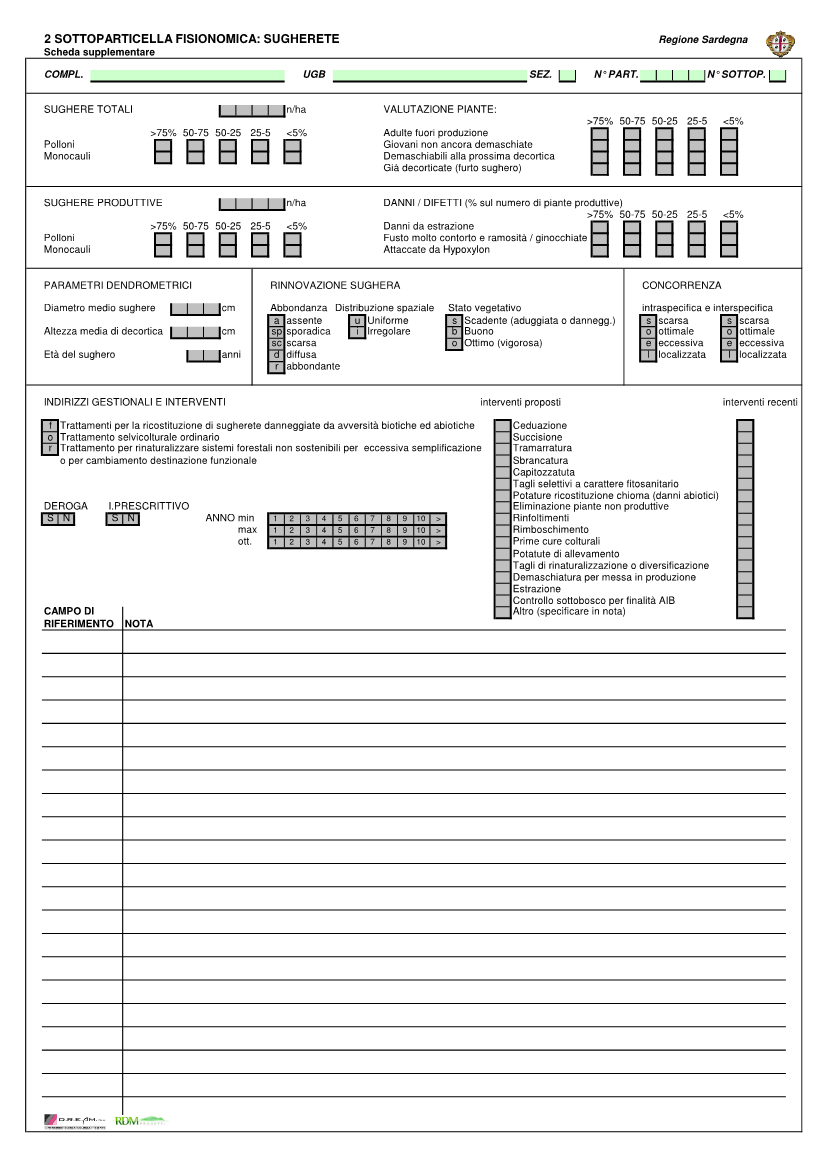
The objective of the protocol is the adoption of a common standard for the description of pure or mixed stands with cork oaks for planning and/or management purposes. The aim is ultimately to contribute to the creation of coherent and complete information bases at the regional level, to improve cork oak forest planning, and thereby foster their development, in accordance with the indications of the Regional Forestry Law (Law no. 8/2016 art. 33) and of regional sectorial regulations on cork (Law no. 4/1994).
The lack of forest planning in both private and public forests is acknowledged as one of the major constraints affecting the cork value chain, in relation to the uncertainty of quantity and quality of cork supply for the processing industry. Moreover, forest planning is an essential pre-requisite for forest certification (FSC, PEFC), which in turn is a useful tool to promote national cork in an increasingly competitive international market. The adoption of a protocol for describing and evaluating the conditions of cork oak woodlands is part of the planning process, and needs to be tailored to the diversified conditions cork oak trees might be found in.
As part of the forest planning of about 55,000 hectares of state-owned forests managed by the Forestas Agency, a protocol for the description and productivity analysis of specialized cork oak woodlands was developed. The spread sheets were originally developed under ‘Progetto Bosco’ by CRA Trento, then adapted to include all descriptive parameters needed to assess on the one hand the state of the forest canopy in terms of floristic composition, structure, phytosanitary status, etc., on the other hand, to determine the quantity and availability of the cork resource for the purpose of harvesting planning. The Guidelines on the survey methodology and planning were approved by resolution of the Regional Council. n. 30/30 of 20.6.2017.
The spreadsheets must be used for all cork oak woodlands (defined by art. 9 of Law no. 4/1994), whether they are specialized cork oak stands with a mainly productive function or non-specialized cork oak woodlands. For agro-silvo-pastoral systems with cork trees, the specific form for ‘pastures, shrubs and wooded pastures’ must be used, in which the shrubby and herbaceous component is prominent. The spreadsheets are accompanied by guidelines for the interpretation of the descriptive items and its correct and possibly univocal compilation, including descriptive photo cards of the main pathogens and entomophiles of oaks. Indications regarding the foreseeable management orientations (renaturalisation, reconstitution, etc.) and interventions (eg. shrub clearance, debarking, thinning) are provided for each forest plot.
When drafting a Forest Plan, the forest description phase represents one of the most critical and complex phases from a technical point of view. The adoption of the cork oak protocol represents a valid tool for acquiring the necessary information for management of regional cork oak woodlands in a consistent and standardized way. The measurement of the parameters contained in the sheets can be particularly complex both in terms of the time required and of an unbiased description of the forest canopy. The complexity increases moving from pure cork oak stands to mixed or rich in undergrowth ones, and from even-aged to the uneven-aged stands.
The protocol for the description of cork oak woodlands could be adopted by other regional administrations and in other Italian regions with a cork vocation, such as Tuscany, Lazio, Campania, Calabria, Sicily, and suitable for its use also in the regions of the Mediterranean basin. The adoption of the proposed guidelines and standard on a large scale could further improve the quality of the information collected in order to address some critical aspects and ease and enhance the operations of description and identification of management orientations.
Sara Maltoni: smaltoni@forestas.it https://www.sardegnaforeste.it
Marisa Cadoni: mcadoni@forestas.it https://www.sardegnaforeste.it
Further information
Murru A., Scotti R., d’Angelo M. (2015) Protocollo per la quantificazione dei prodotti sughericoli nella foresta certificata di Fiorentini (Agro di Bultei, SS). Tesi di laurea triennale Università di Sassari, dipartimento di Agraria, Corso di laurea in Scienze forestali e ambientali a.a.2014-2015.
Spanu M., Scotti R., d’Angelo M. Adattamento del metodo "ProgettoBosco – Sistema informativo per l'assestamento forestale" all'ambiente mediterraneo: implementazione di una scheda per la descrizione particellare delle sugherete specializzate per la produzione di sughero (2011). Tesi di laurea: Università degli Studi di Sassari Corso di laurea in Scienze forestali e ambientali a.a.2010-2011.
LINEE GUIDA PER LA REDAZIONE DEI PIANI FORESTALI PARTICOLAREGGIATI (PFP) (art. 9 della L.R. n. 8 del 27 aprile 2016 “Legge Forestale della Sardegna”). Allegato alla Delib.G.R. n. 30/30 del 20.6.2017. https://www.regione.sardegna.it/documenti/1_274_20170622115158.pdf
M. d'Angelo

One of the spreadsheets for the description of pure and mixed stands of cork oak woodlands in the protocol adopted by FoReSTAS. M. Cadoni
